After a fire left it in ruins, it was used in the 70s for different activities such as physical education classes or picnics. It was enough to cross the Mapocho River on a bridge created from a trunk of eucalyptus.
Many people have been wondering for over 50 years what is the real story behind the enigmatic and mysterious abandoned mansion on Mount Alvarado.
Located in Vitacura (formerly Las Condes), the property that covered a total of 100 hectares, It is located on the ascent of Santa Teresita de los Andes, which joins the Tabancura sector with Lo Curro and La Dehesa (Lo Barnechea).
In the 70s and 80s, this area was practically countryside. Although urbanization and properties existed, life was different. Children could play in the street, the Costanera Norte was not there, and crossing the Mapocho River was a common scenario, as well as, go explore the ruins of the old house.

Many schools in the area have used it as an activity for their students, both recreationally and for physical education classes, as well as for neighborhood residents. This is the case of the Tabancura school, located at the foot of the hill, next to the river. At the date there is no graphic evidence of what the house looked like in its youth there are only traces of ruins.
Miguel Irarrázaval, a former student of the Tabancura school, is the one who saved the images from the old yearbooks and albums of the establishment, from the mid-1970s. He tells Qué Pasa What did they think of the place at the time, how was it to climb the ruins during school hours? and more than one anecdote.

“I suspect the footage must have been taken by the person who was the school’s first rector, Juan Cox, he always carried the camera on his shoulder. The photographs must date more or less from the years 74, 75 and 76. I have always known it in ruins”, emphasizes Irarrázaval.
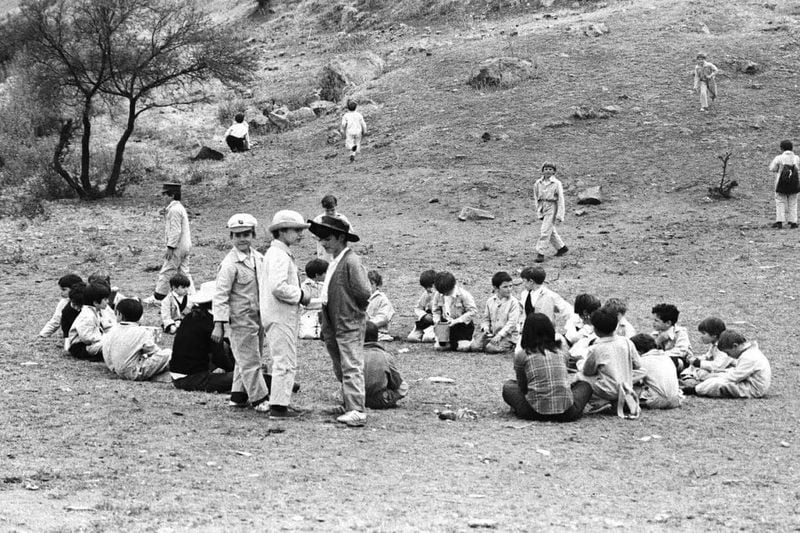
New images of the enigmatic abandoned Vitacura mansion
At that time, in this sector, there were neither fences nor walls, “the school was bounded against the river, so at recess we went to the river or in physical education classes, we went for a run. There was a trunk of eucalyptus that served as a bridge over the Mapocho, then we climbed to Cerro Alvarado. It was normal that as a warm-up they send us running towards the hill, towards the ruins of the house “, he reveals.

According to Irarrázaval, the publication of the history of the house in this medium completed a puzzle that has always remained unfinished for former students, as well as for others who knew about the ruins, but had no information about their origin. , although , Add , “At that time, no one wondered or wondered who this house belonged to or what had happened to it. It wasn’t a problem.”
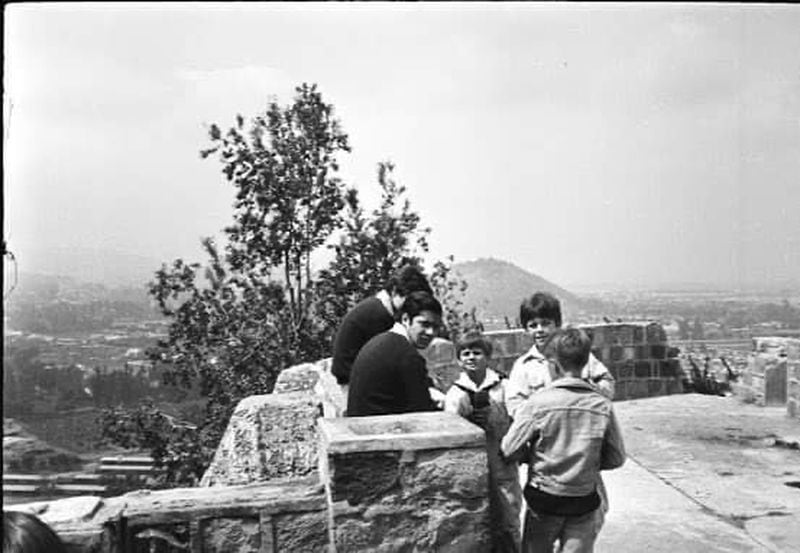
At that time, contrary to what the ruins of the old mansion are today, the construction still had the walls, reveals Irarrázaval. “Also we occupied the suspension bridge of the Manquehue school to climb the hill. Often (as the photos show) we also walked up, it was like a picnic day, although I don’t remember very well,” he adds.

The enigmatic abandoned mansion of Cerro Alvarado
It was perhaps the house with the best view of the Santiago Valley at that time. Built between the 20s and 30s, in the first decades of the 20th century it had more than one owner, and of course, many anecdotes and stories.
Originally it belonged to the businessman Mateo Delporte and later it passed into the hands of the García family, from 1946, who made some improvements. The work began at the old new bridge (now the old bridge), located in Lo Barnechea, a place that still preserves the wrought iron gate, and reached the current rise of Santa Teresita de los Andes, where the house was. Summit at the Mapocho River.
Fernando Córdova, grandson of the previous owner, Dolores García Madrazo, tell what is happening the origin and history of the house. “This house was used on weekends until a group of hippies in the late 60s arrived and burned it down. My grandmother Dolores García never wanted to rebuild it, since she lived in Buenos Aires. On one side was the caretaker’s house, some cellars and a lion’s den (used for cougars). It had a driveway that started at the entrance to the new bridge… boundary of the commune.”
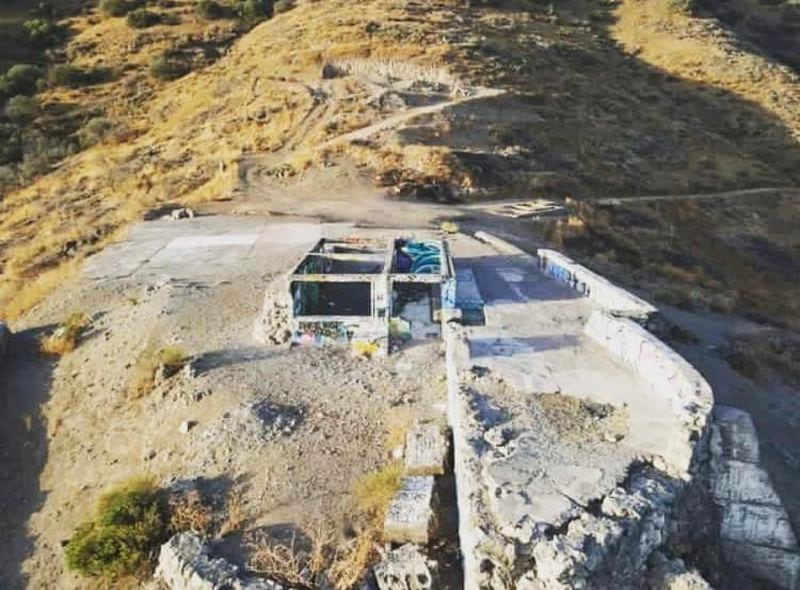
“When the first owner of the house passed away, a private auction was held mainly with his family. My grandmother was also present and the family history says that the auctioneer awarded it to my grandmother without further ado, thinking she was a relative.There was a big riot, and relatives immediately wanted to buy the property from her, even at a higher price. My grandmother, who had no financial problems, was not interested” reveals Cordoba.
Córdova, the grandson, continues. “Firstly, because he always loved property, and secondly, being very good at the real estate business, he knew that his surplus value would continue to increase. Don Mateo also owned the land across the river and his employer’s house was the one that stood for many years on one side of Avenida Las Condes (see photo below), a slightly lower than before.l Country Club Las Condes “, remember.
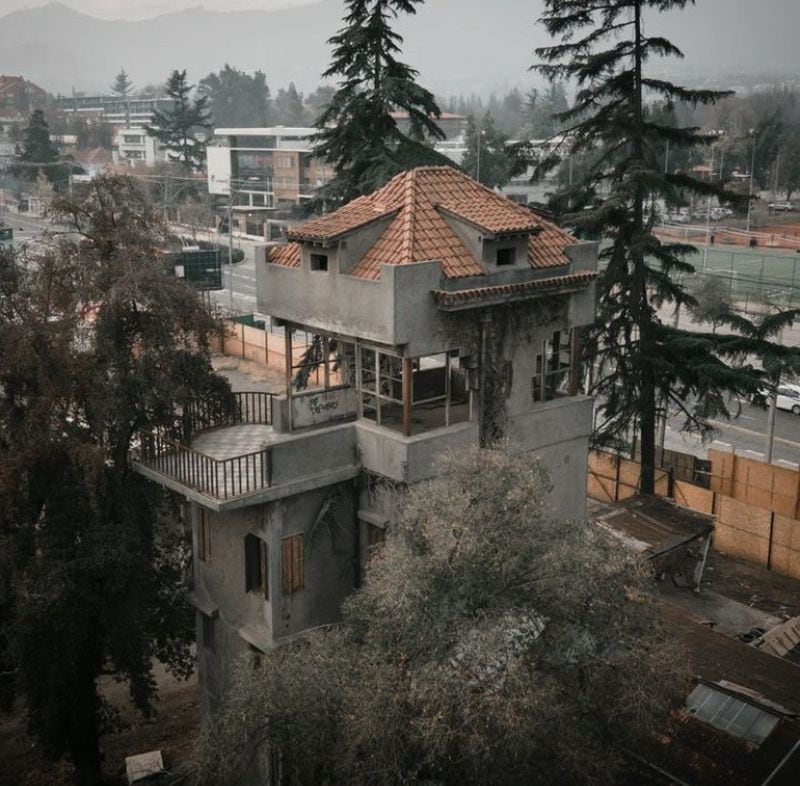
“There are still traces of the road. There was a very nice bridge with a climb with rubble walls a little before Copec (opposite the Costanera Norte) which was demolished not long ago, and served for cross the Metropolitan Canal which crosses the hill from west to east “, establishes Cordoba.
The enigmatic mansion in ruins more than 50 years ago
Regarding the distribution of the 100 hectares that made up the property, it adjoined the lands of the Rabat and Goycoolea families. “José Rabat had the land to the west, which is now Santa María de Manquehue. If I remember correctly, the GoycoOlea thing would be in front of Cerro Alvarado. Although the hill belongs to Vitacura, I always found it weird because it’s more part of Lo Barnechea or Las Condes “, recognize.
Córdova also believes that her grandmother was one of the few women driving at that time (see photo below). “I used to drive home from Cerro Alvarado on weekends on a narrow path, full of curves, which was not for everyone. She Spanish, already widowed, arrived in 1918 at the port of Valparaíso asking for her hand from Chile by letter, as was not unusual at that time, by my grandfather, who had also arrived from the peninsula years before . A strong woman, with character, visionary, used to negotiating in a man’s world and with an interesting life story… a very advanced woman for her time, widowed at 40, at the head of a successful business that she grew even more, and of a whole family,” he says.
Her husband was Hilario López Cubas. He was the first to install a chlorine plant in Chile around 1905. He named it Agua Cubas, a name popularly used for decades to name chlorine in Chile.
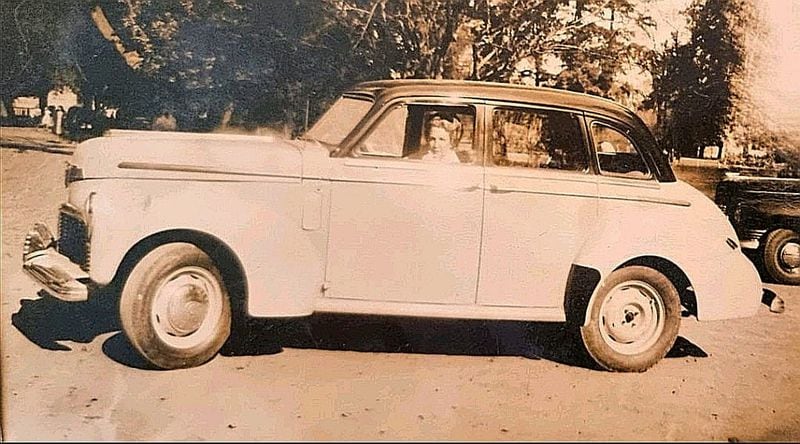
The house was a place of rest and a meeting point for friends, says Córdova, because it was a very attractive place for weekend meetings, especially because of the beautiful views offered by its huge terraces, which are something poorly preserved to this day. “In the mid-1960s she left Chile as her habitual residence, alternating between Santiago, Majorca and Buenos Aires, and the house began to be less and less inhabited, until the disastrous arson of 1968 made me never want to climb again and less rebuild the house. Then it was abandoned and people dismantled it,” he adds.
“The administration remained in the hands of my mother for a few decades, where the 100 hectares next to the Mapocho were made to produce something and the remains of the house were raised from time to time until the flood of the river in the 80s devastated these lands and part of the road, which, helped by the artificial embankment that accumulated on the south bank, transformed the bed of the Mapocho”, he recalls.
Between myths and legends: the enigmatic abandoned mansion
Cordoba reveals another anecdote from the old house in Cerro Alvarado, which his grandmother recounted, “and I also heard it from Mrs. María, guardian for many years of the entrance, in a small house located next to the iron gate, where the you accessed the property. At that time, the old “new bridge” was single-track and made of planks,” he explains.
“Local legend has it that there was a gold mine on the slopes. This story must go back to the 19th century, I think, or maybe earlier…because the oldest inhabitants of the region, the people who lived in the town of Lo Barnechea knew it. And it was added to the same caption later, that Mr. Delporte had built his house in Las Condes with a tower so tall, it had to be set up with a telescope to survey the supposed entrance to the mine,” says Córdova, although other versions indicate that the tower must have seen the stars.
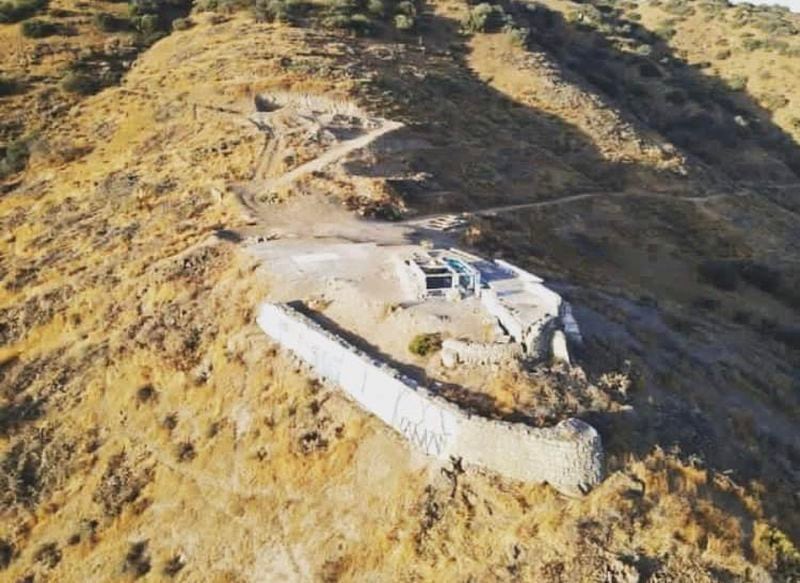
Romantic legends because nothing was ever known, establishes Córdova. “I never heard my father, who was a mining engineer, say anything about it. I remember on the way to the house on the hill there were caves where decades ago hawthorn was burned to make charcoal, and when we were children we imagined that no any of these holes could be the entrance to the mysterious mine… Things from the fertile imagination of childhood,” he admits.
Córdova puts on the table (see photo below) a report from 1927, where we can see the former owner of the house, Mateo Delporte, carrying a freshly slaughtered puma. “This photo today would have caused a scandal. It confirms that he did indeed have a close relationship with cougars, and therefore why when the house was purchased it had these lion dens… other times, another way of seeing. Years when it was thought that natural resources and wildlife were inexhaustible,” he points out.
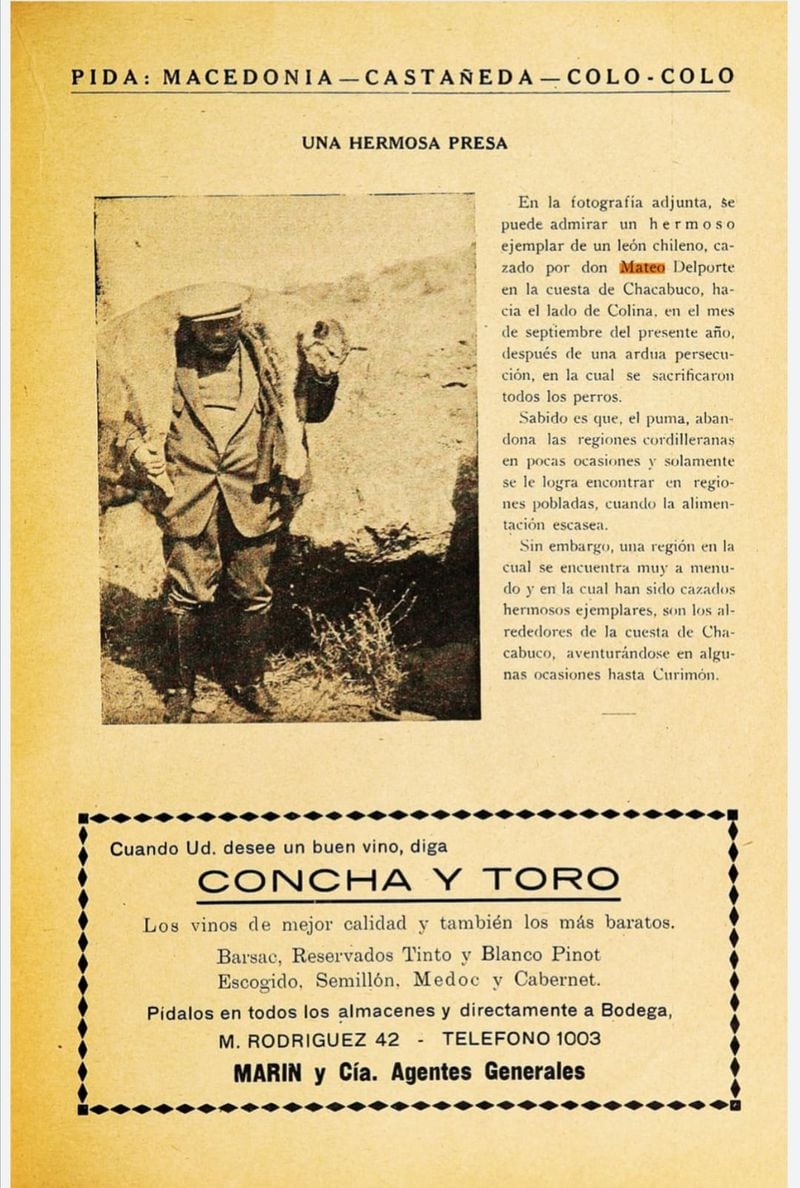
In 2011, the land of the house was sold to a construction company for residential projects (buildings), which have not yet materialized, since the ruins are still in place. “Unfortunately where the house was, I think a building will go if or so, as it is a privileged and impressive balcony with views of the mountains and the valley of Santiago… increasingly difficult to see with so much pollution. They are starting to urbanize and part of the old road has already been destroyed,” he says.
Source: Latercera
I’m Rose Brown , a journalist and writer with over 10 years of experience in the news industry. I specialize in covering tennis-related news for Athletistic, a leading sports media website. My writing is highly regarded for its quick turnaround and accuracy, as well as my ability to tell compelling stories about the sport.


